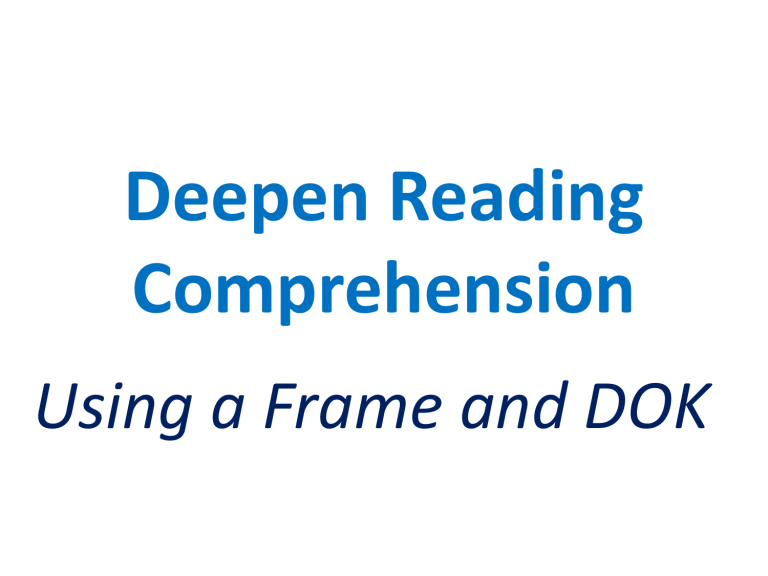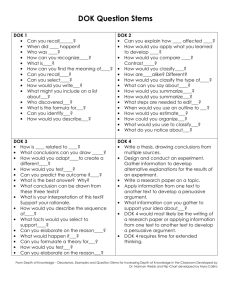Deepen Reading Comprehension

Deepen Reading
Comprehension
Using a Frame and DOK
Frames used as a teaching tool:
1. Focus on the central ideas or themes of a text
2. Clarify understanding
3. Guide thinking while also providing independence
4. Build support, encourage justification
Layered with DOK questions, frames:
• Supports individual analysis and evaluation of text
• Supports development of independent research
• Provides organizational structure for responding to literature or writing a report
• Helps focus thinking about unanswered questions and promotes curiosity
What is a Frame?
• It is an organizer that features a central topic framed by guiding questions.
• Frames are not necessarily defined by four sides. When would two sides serve as a useful organizer? When would three or five sides better serve the reading comprehension?
• A rule of thumb is that four sides provide
multiple layers for thinking about text.
• A frame can serves as a group activity with each section assigned to a person or table group.
To Create a Frame for Social Studies or Science Reading Comprehension
1. Place the lesson topic in the center of the frame.
2. Review the DOK question stems.
3. Select three (use instructional discretion to tweak) questions reflecting levels 1 through 3.
4. For the fourth section, begin to prepare them for a
DOK level 4 task by asking what questions they have about the reading. This begins to prepare them for development of a thesis or research task by the end of the chapter, unit, or theme.
What questions do you have about the land between two rivers?
DOK 1. How would you describe the importance of the Tigris and Euphrates?
The Land
Between Two
Rivers
DOK 2. How are the major early river civilizations alike?
Different?
DOK 3. How is irrigation related to development of a civilization?
Create a Frame!
• Using the organizer in the next slide and the
DOK question stems, frame an upcoming social studies or science lesson.
• Just click of each labeled section and begin typing. OR-Handwrite a frame-some of us do our best thinking longhand!
What questions do you have
DOK 1.
Lesson:
DOK 2.
DOK 3.








